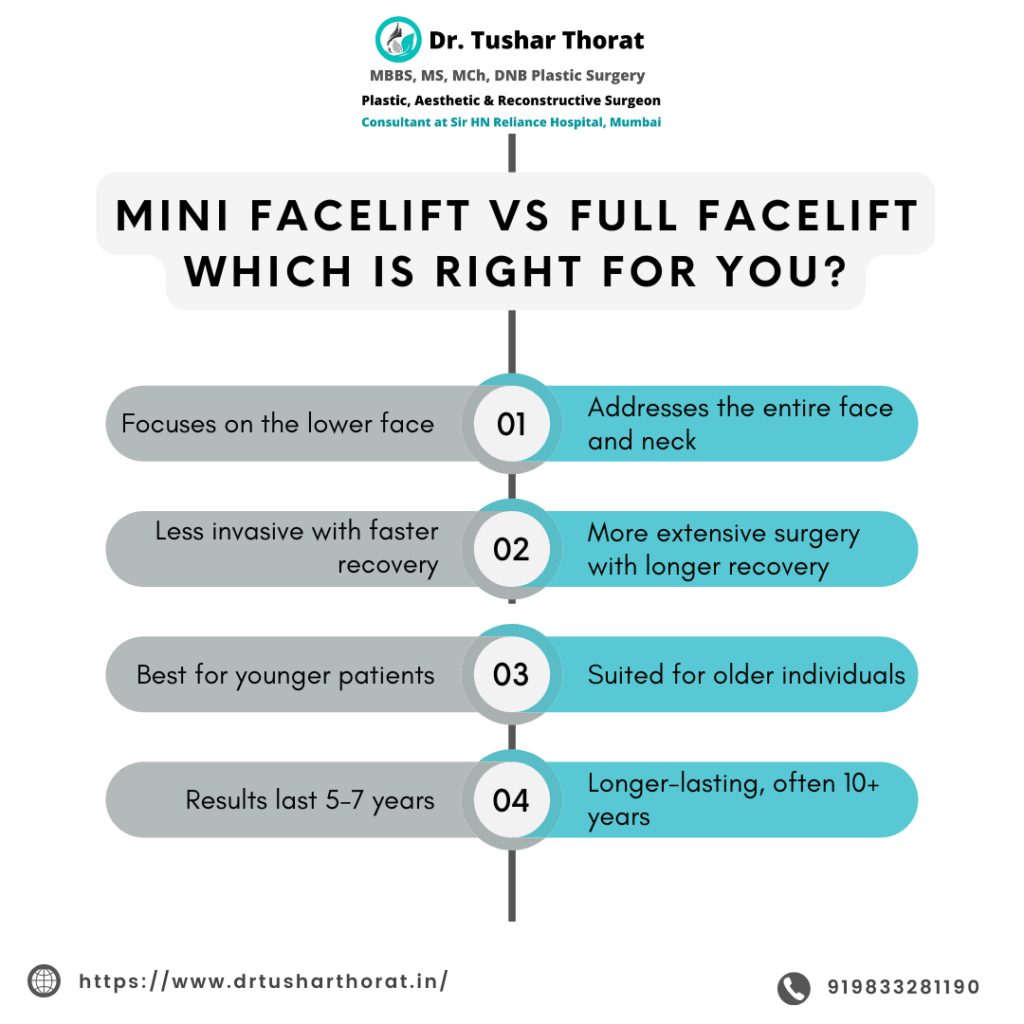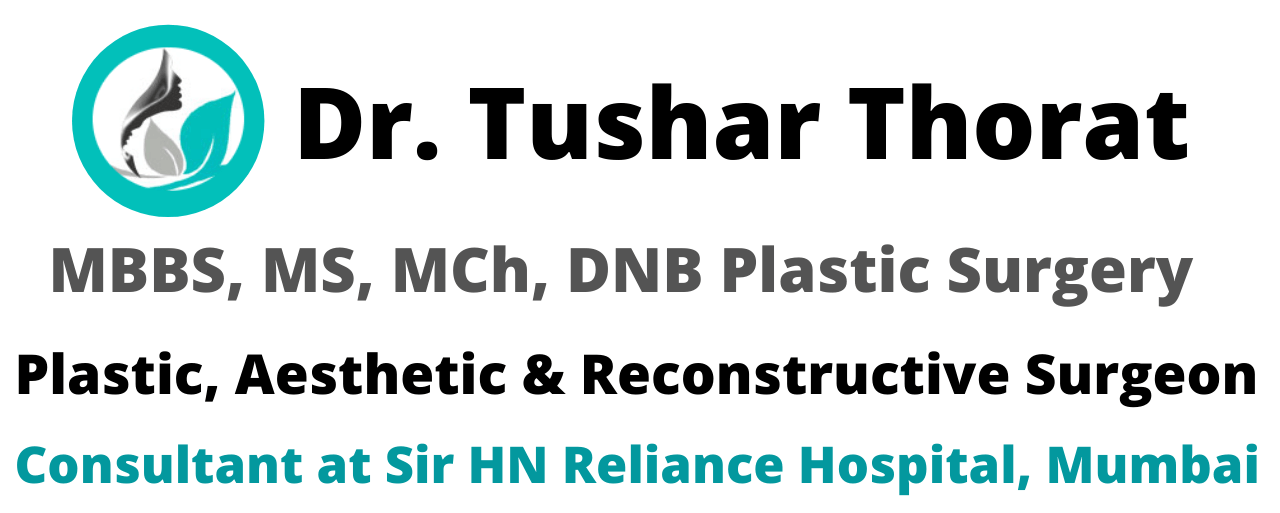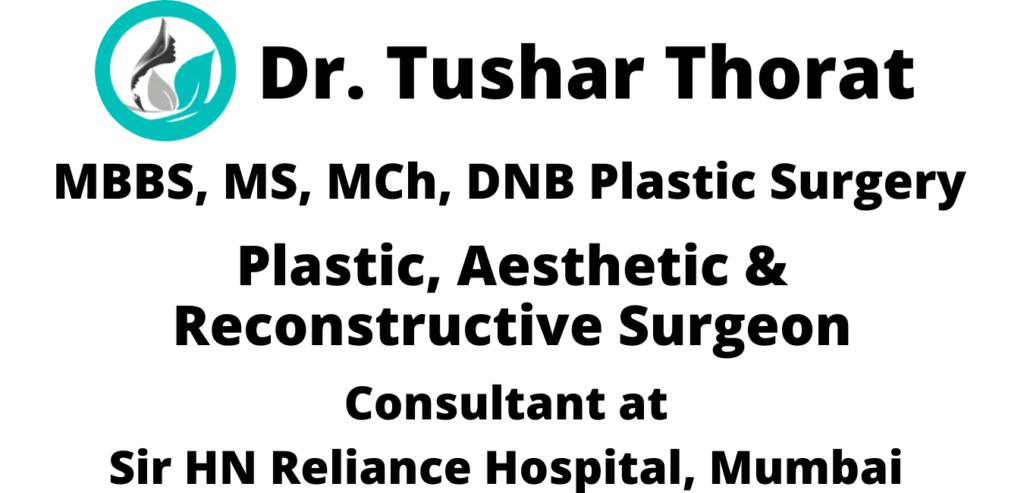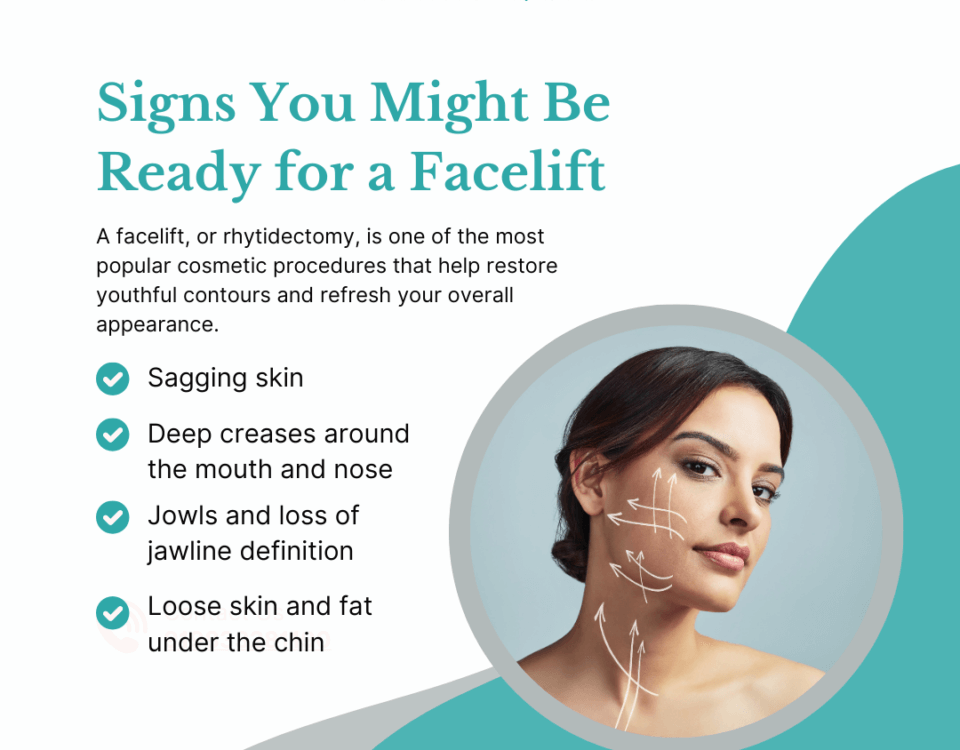As we age, it’s natural to notice changes in the skin — sagging cheeks, deeper smile lines, and a less defined jawline. While skincare and non-invasive treatments help delay the process, there comes a point when surgical options offer longer-lasting results. That’s where facelift surgery comes in. But with terms like “mini facelift” and “full facelift” being used, many patients ask: What’s the difference? Which one is right for me?
In this blog, Dr. Tushar Thorat, renowned plastic and cosmetic surgeon, breaks it down in simple terms so you can make a confident, informed decision.

What Is a Facelift?
A facelift, medically known as rhytidectomy, is a cosmetic surgical procedure designed to reduce visible signs of aging in the face and neck. It tightens the skin, lifts sagging tissue, and smoothens wrinkles, giving a more youthful appearance.
Facelifts are not one-size-fits-all. Depending on your goals, age, and skin condition, your surgeon may recommend a mini facelift or a full (traditional) facelift.
Mini Facelift: The Quick Refresh
What it is:
A mini facelift is a less invasive version of the traditional facelift. It mainly targets the lower third of the face — think jowls, jawline, and mild sagging in the cheeks.
Ideal for:
✔️ Patients in their late 30s to early 50s
✔️ Mild to moderate sagging
✔️ People looking for subtle, natural-looking results with shorter recovery time
Procedure highlights:
- Small incisions around the ears
- Tightening of skin and underlying tissue
- Usually performed under local anesthesia or sedation
Recovery time:
Around 5–7 days, with minimal bruising and swelling.
Full Facelift: The Complete Rejuvenation
What it is:
A full facelift offers a comprehensive correction of moderate to severe signs of aging in the face and neck. It addresses deep wrinkles, jowls, droopy cheeks, and loose skin on the neck.
Ideal for:
✔️ Patients 50+
✔️ Visible sagging and skin laxity
✔️ Those seeking more dramatic, long-lasting results
Procedure highlights:
- Longer incisions that may extend behind the ears or into the hairline
- Lifting and repositioning deeper tissues (SMAS layer)
- Often combined with neck lift or eyelid surgery for a full makeover
Recovery time:
Typically 2–3 weeks, with swelling and bruising subsiding gradually.
Mini Facelift vs Full Facelift: A Side-by-Side Comparison
| Feature | Mini Facelift | Full Facelift |
|---|---|---|
| Target Area | Lower face (jowls, cheeks) | Entire face + neck |
| Invasiveness | Less invasive | More extensive |
| Anesthesia | Local or mild sedation | General anesthesia |
| Scarring | Minimal (hidden near ears) | More extensive (well-hidden) |
| Downtime | 5–7 days | 2–3 weeks |
| Longevity | 5–7 years | 10+ years |
| Best For | Younger patients | Older patients with sagging |
Which One Is Right for You?
It depends on:
- Your age and skin condition
- How much sagging or wrinkling you want corrected
- Your expectations for results
- Time you can spare for recovery
- Budget and long-term goals
“During consultations, I always evaluate the patient’s facial anatomy, skin laxity, and aesthetic goals before recommending a tailored plan,” says Dr. Tushar.
Combining with Other Procedures
Facelift surgeries can be combined with:
- Neck lift (for turkey neck or double chin)
- Eyelid surgery (blepharoplasty) for droopy eyes
- Fat grafting to restore volume
- Botox or fillers for fine lines
This combination approach often delivers the most balanced, natural-looking outcomes.
Is It Safe? What Are the Risks?
Both mini and full facelifts are safe in the hands of a qualified, board-certified plastic surgeon. Common side effects include:
- Temporary swelling or bruising
- Numbness
- Scarring (minimal and usually hidden)
Complications are rare but may include infection, hematoma, or asymmetry. Choosing an experienced surgeon like Dr. Tushar significantly reduces these risks.
Frequently Asked Questions (FAQs)
Q1. Is a mini facelift worth it?
Yes, if you’re looking for subtle improvement with minimal downtime. Results can last up to 5–7 years.
Q2. Will I have visible scars?
Incisions are made in natural creases and behind the ears to minimize visible scarring.
Q3. Can a mini facelift turn into a full facelift later?
Yes. Many patients start with a mini facelift in their 40s and opt for a full facelift later when aging progresses.
Q4. What’s the right age for a facelift?
There’s no fixed age. It’s more about visible signs of aging and skin elasticity than age alone.
Q5. How do I prepare for facelift surgery?
Avoid smoking, blood-thinners, and follow your surgeon’s pre-surgery instructions closely. Stay well-hydrated and rest well.
Still Unsure Which One to Choose? Book a Consultation!
Whether you’re noticing early signs of aging or are ready for a major refresh, Dr. Tushar Thorat will guide you with compassion, precision, and expertise.Schedule your personalized consultation today






